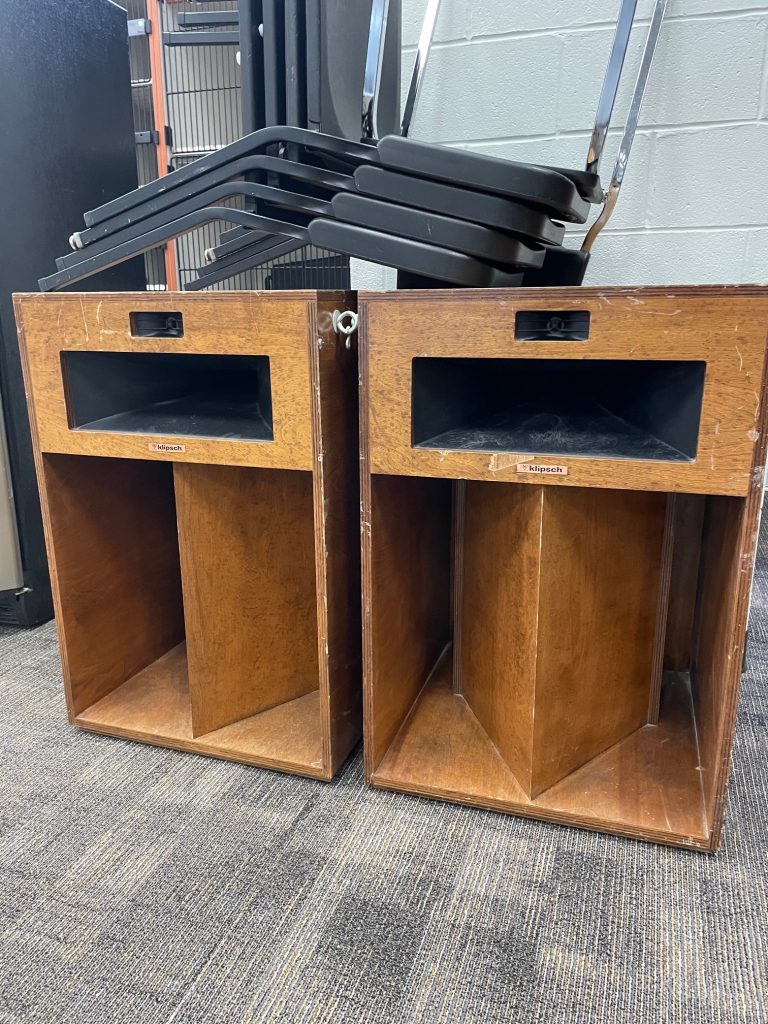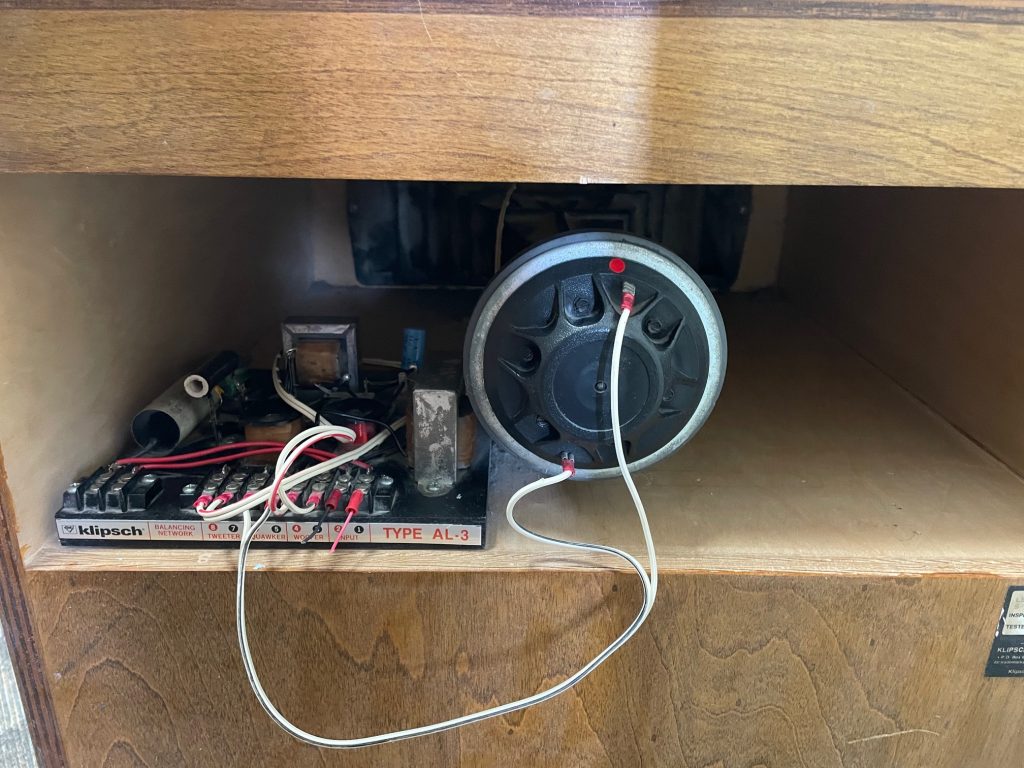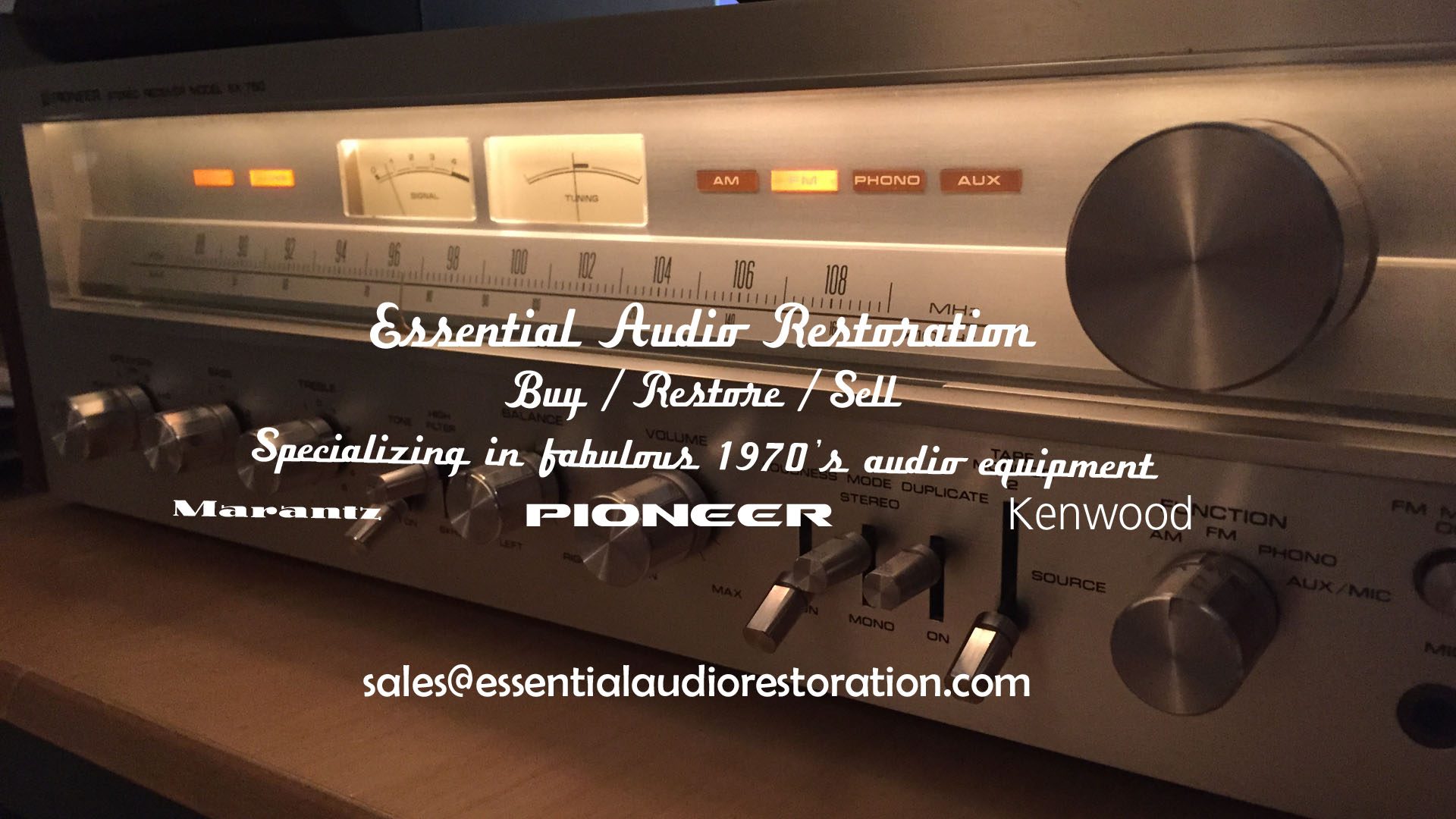
8/7/2021 – So it has been over a year since my last project and I hope everyone has weathered the covid storm – for now. My family has been spared fortunately, but my day job over the last year has had me working 12+ hour days for nearly 10 months. As a result I have not had time for any type of audio project. That has recently changed, however. My 2 boys have both been in the high school band and as a result I have on occasion spent time in their band hall. During those years I noticed that they had this pair of Klipsch LaScalas hanging from the ceiling. On my last visit to the band hall at the end of last year I noticed that the speakers were gone and had been replaced by some soulless powered PA speakers. I started asking questions about the the LaScalas as I figured they had been taken by someone that had an appreciation for such beasts. Instead, I discovered that they were shoved in a back room and were waiting to be put in the dumpster. After a lot of pleading, I was given the opportunity to rescue these from the dumpster and I hope that I can do a quality restoration that may (fingers crossed) allow me to keep them. They are going to have to look GOOD before the wife approves these as they are massive. For me they do have some sentimental value as they were at the school for 30 years and both of my kids spent significant time in the room with them.
This is going to be a very long restoration project as there are several factors to address. First is the need for a mid driver. After decoding the serial number tags on the back I was able to determine that these were manufactured on Jan 15 1992 and they utilize the K-77-M tweeter, K-55-M Squawker and K33 15″ woofer. Unfortunately one of the K-55-M mid drivers was replaced with what is now a non-functioning Peavey unit. I did a lot of research around this and discovered that since the LaScalas release in 1963, there have been several versions built that utilize specific driver sets and more importantly specific crossover networks. In 1992 Klipsch was building these using the K-55-M mid that utilized a ceramic magnet and were about 1.5db hotter than the previous versions K-55-V made by Atlas. As a result the crossover network created for this model (AL-3) is specifically created to compensate for the K-55-M driver. Here is the big downside – The K-55-M driver is no longer in production so sourcing one is a bit challenging. Over the years I have had good success finding unobtanium items using FB groups, Audiokarma forums and similar sites. In this case I was able to successfully find a working unit.

So my immediate plans are this.. I am going to install the new driver, move them into my room and listen to them using my PS Audio 250 monoblocks (I know this is overkill as these are 104db/1watt efficient). I will then do a recap on the crossovers and listen to them a bit more. Based on that I will probably make the decision – keep or flip. My neighbor is a woodworker and is already cooking up some great ideas for the cabinets. Stay tuned as this should be fun and the results should be impressive..
